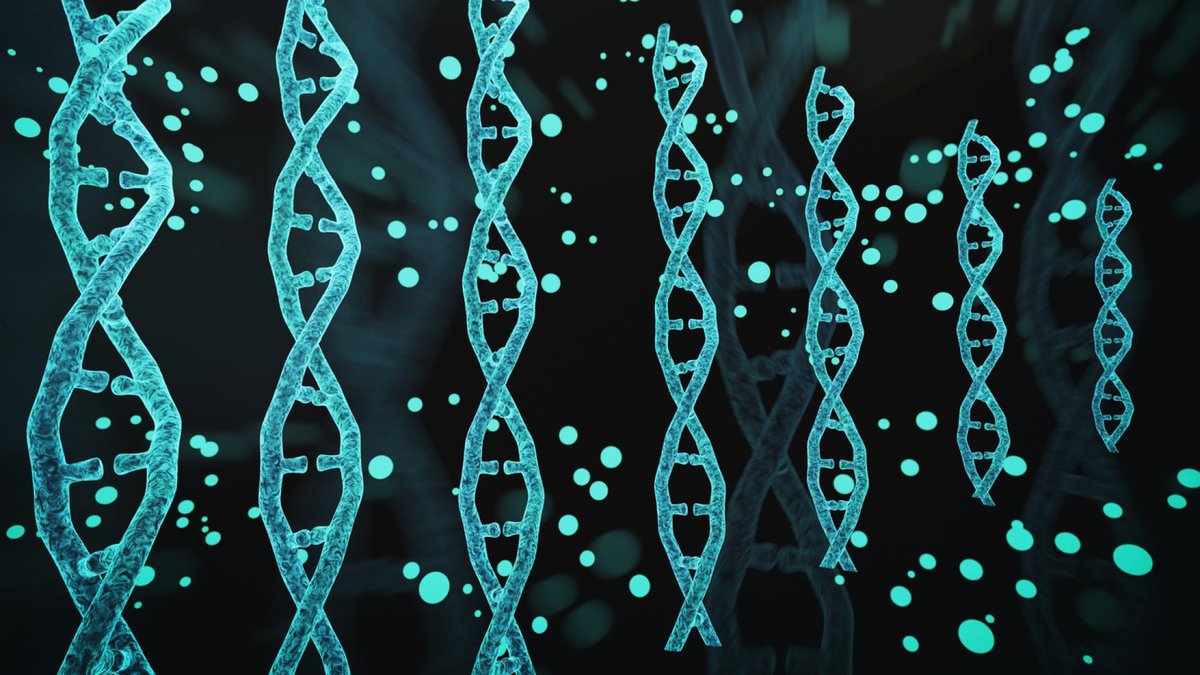
Late-onset Alzheimer’s, the most common form of the disease, is characterized by clinical symptoms and signs of the disease that become apparent after the age of 60. Explore the latest scientific information concerning heredity and this form of Alzheimer’s.
“…Am I at Risk Too?”
Mrs. West* looked at me with a mixed expression of sadness and relief as we spoke in my office. I had just explained to her that her story and her test results suggested that she was experiencing an early stage of Alzheimer’s disease. She was not surprised and said it was helpful to put a name to the changes she began to sense a few months after her 83rd birthday. Her ability to remember even important things had changed significantly, and she suspected this meant she was developing the same disease that had affected her mother’s and her aunt’s final years.
“I took care of my mother, and now that I know what I’m facing, I have a pretty good idea how to make the best of it,” she said. Her two daughters sat next to her, each holding one of her hands. I saw empathy and love in their faces. I also saw the question that each of them was burning to ask, the same question that troubles anyone with a relative who suffers from Alzheimer’s. Finally, Sharon, the older daughter, voiced their fear: “Are my sister and I at risk for this too?” My answer to this question included a discussion of what we know and what we don’t know about the heredity of Alzheimer’s disease.
Early-Onset Alzheimer’s
Alzheimer’s is considered one disease, but this final destination can be reached by more than one road. When the disease becomes apparent before age 60, it is called “early-onset Alzheimer’s disease.” Many people with early-onset Alzheimer’s, although not all, have inherited a gene mutation that alters their production or elimination of beta-amyloid, the toxic protein known to accumulate in the brains of people with Alzheimer’s. Several inherited gene variations have been identified as capable of causing early-onset Alzheimer’s, each in its own way. The expression of these genes is autosomal dominant, which means that half the children of an affected parent are likely to carry the disease gene and develop the clinical disease. Altogether, the early-onset cases represent only a small percentage of all people who develop Alzheimer’s. Families who have members with early-onset Alzheimer’s have been studied a great deal, though, because of what their genes can tell us about Alzheimer’s underlying processes.
The Genetic Risk of Late-Onset Alzheimer’s
Much more commonly, the clinical symptoms and signs of Alzheimer’s become apparent after age 60. Although much evidence tells us that a disease process was smoldering for many years before its clinical appearance, this later development of evident signs is called “late-onset Alzheimer’s disease.” The likelihood of inheriting late-onset Alzheimer’s from a parent is much lower than the risk of inheriting the early-onset form from a parent with an autosomal dominant gene mutation. Still, there is about a five-fold greater risk of developing Alzheimer’s by age 87 for a person of age 65 with a first-degree relative who has the late-onset form of this disease. Joanne and her sister, therefore, are at significantly greater risk for Alzheimer’s by age 87 than the 1 in 10 risk of a 65-year-old without an affected parent or sibling. For a person of African-American or Caribbean-Hispanic ancestry and a relative with late-onset Alzheimer’s, the risk is greatly increased even more.
The Combined Effect of Multiple Genes
Why is the inheritance of late-onset Alzheimer’s so much less frequent than for early-onset? In part, the answer is that there is no single gene mutation that consistently causes late-onset Alzheimer’s in the autosomal dominant pattern characteristic of early-onset Alzheimer’s. Instead, the late-onset form seems to represent the combined effect of multiple genes, each of which increases the risk a little. The best known of these, the apolipoprotein E gene (ApoE), provides information that the body needs to make a protein that plays a role in the transport of fats and cholesterol throughout the body.
The Greek letter epsilon (ε) followed by a number is used to name the parts of ApoE’s three versions: ApoEε2, ApoEε3, and ApoEε4. One ApoE gene copy is inherited from each parent, so any combination of two gene copies can be present. The ε4 type has been linked with an increased risk for early or late-onset Alzheimer’s, and people who have inherited two copies are at even greater risk. It is estimated that people with the two copies of the ε4 gene are at 12 to 15 times the risk for Alzheimer’s compared to noncarriers. But inheriting one or even two ApoE ε4 genes does not guarantee that AD will develop, nor does the absence of any ε4 genes assure that Alzheimer’s will not develop. In African Americans, the relationship of ApoE genotype to Alzheimer’s inheritance risk is weaker than in European Ancestry populations.
ApoE, though best known, is only one of many genes that contribute to the risk of developing late-onset Alzheimer’s. Many others have been identified using statistical methods to hunt for genes found more often in people with than without Alzheimer’s. Finding these so-called “candidate genes,” which is achieved through exhaustive comparisons of the entire genome of many people with and without late-onset Alzheimer’s, may increase our understanding of the disease’s causes. Once the normal function of the genes is known, researchers can investigate what happens when variant gene types interfere with that normal function. Families in which two or more people have had late-onset Alzheimer’s are of special interest to researchers because genetic comparison of affected with unaffected individuals within the extended family can shed light on the genes associated with higher risk for inheritance.
Non-Genetic Risk Factors
Inherited genes, as research has shown, are not the only important contributors to the development of late-onset Alzheimer’s. Some studies, for example, have identified changes in genes that occur after inheritance takes place. These “epigenetic” events involve changes to the normal process by which DNA creates proteins and can introduce damaging metabolic effects. Finally, the risk of developing Alzheimer’s is affected also by environmental factors, including diet, activity, smoking, traumatic brain injury, diabetes, and other medical diseases.
Summary
With current technology, Sharon and her sister cannot change their genes. Genetic testing for the version of apolipoprotein or other late-onset-associated genes would not be recommended because the information obtained would be limited and possibly misleading. On the other hand, as I’ve emphasized in previous essays, they may reduce their risk for memory loss and other cognitive changes by adopting a “brain-healthy lifestyle.” Attention to physical activity, nutrition, social connectedness, disease management, and cognitive stimulation may reduce the likelihood of dementia during their later years.
*Names and details have been disguised to protect the anonymity of this family.
About BrightFocus Foundation
BrightFocus Foundation is a premier global nonprofit funder of research to defeat Alzheimer’s, macular degeneration, and glaucoma. Since its inception more than 50 years ago, BrightFocus and its flagship research programs—Alzheimer’s Disease Research, Macular Degeneration Research, and National Glaucoma Research—has awarded more than $300 million in research grants to scientists around the world, catalyzing thousands of scientific breakthroughs, life-enhancing treatments, and diagnostic tools. We also share the latest research findings, expert information, and resources to empower the millions impacted by these devastating diseases. Learn more at brightfocus.org.
Disclaimer: The information provided here is a public service of BrightFocus Foundation and is not intended to constitute medical advice. Please consult your physician for personalized medical, dietary, and/or exercise advice. Any medications or supplements should only be taken under medical supervision. BrightFocus Foundation does not endorse any medical products or therapies.
- Genetics








